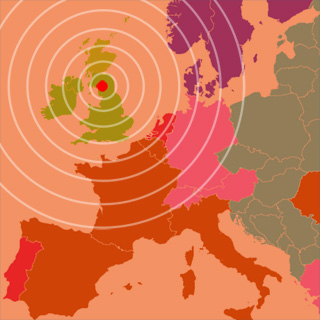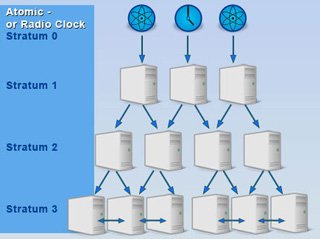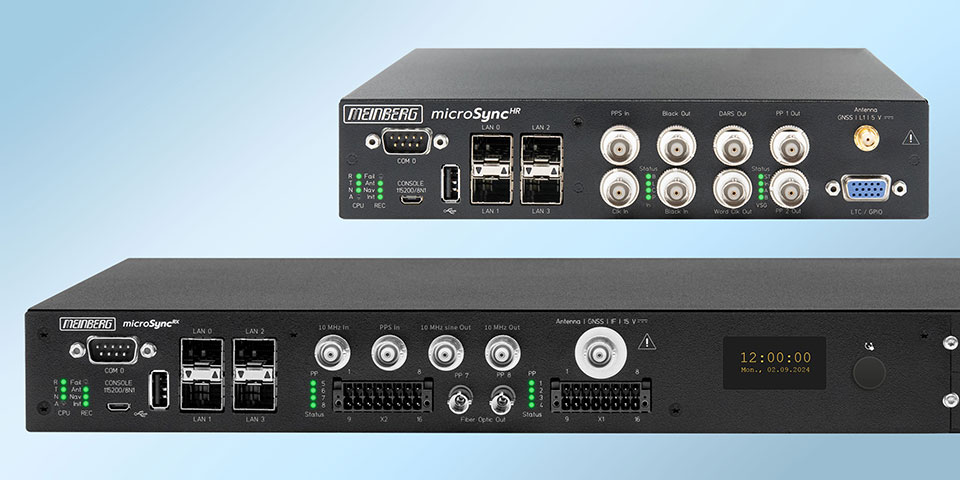Time Server Basics
A time server is a type of network server which transmits precise time information to its network clients, by using a definite protocol. A time server can be a dedicated server, whose single purpose is to provide accurate time. Sometimes it can also be a multi-purpose network server to which the time distribution function can be added.
The Time Server needs a reference clock that defines the true time, as reference it uses the Coordinated Universal Time (UTC) without offset. Coordinated Universal Time (UTC) is the primary time standard by which the world regulates clocks and time. It is one of several closely related successors to Greenwich Mean Time (GMT). UTC can be used everywhere in the world, meaning that it is independent from time zones (i.e. it is not local time). The clients receive the UTC time without offset from the network time server. To convert UTC to local time (UTC+offset), the clients would have to add or subtract the local time zone.
Time Server Protocols
NTP
The Network Time Protocol (NTP) is the most frequently used protocol for time synchronization in a network. It is an open source protocol, originally designed by professor David L. Mills of the University of Delaware and still maintained by him and a team of volunteers since 1985.
SNTP
Simple Network Time Protocol (SNTP) is a less complex implementation of the network time protocol. It uses simpler algorithms and it is often used in embedded devices like industrial control systems and in applications where high accuracy is not required.
PTP-IEEE-1588
The Precision Time Protocol (PTP) as defined in IEEE 1588-2002 (also known as ptp version 1) was invented by John C. Eidson, Agilent Technologies. It is a time protocol which synchronizes clocks throughout a computer network. Compared to the Network Time Protocol (NTP) it focuses on higher clock accuracy and local area network. In 2008 a revised standard, IEEE 1588-2008 (ptp version 2) was released. It achieves clock accuracy on a sub-microsecond range, making it suitable for measurement and control systems. Reasons for the upgrade in 2008 were to improve its accuracy, precision and robustness. To achieve maximum accuracy every network component which is in between the servers and the clients should support PTP, but it is no absolute requirement for reaching a more or less high accuracy.
Legacy Network Time Synchronization Protocols
Time Protocol (RFC 868)
Daytime Protocol (RFC 867)
Typical Reference Time Sources for Time Servers
GPS
The Global Positioning System (GPS) is a technology for determing a location using signals from a network of satellites that orbit earth. This system can be used everywhere around the world, all that is needed is a GPS receiver and a GPS antenna with clear enough view to the sky to receive signals from GPS satellites. Each satellite carries several atomic clocks and has a very accurate time, which enables the Global Positioning System (GPS) to offer a high-precise time.
DCF77
DCF77 is a long radio wave time signal and the official time signal of the Federal Republic of Germany. The transmitter is located in Frankfurt/Mainflingen and it distributes the signal by long radio waves within a radius of 1500km. The advantage of using the DCF77 as a time reference source, is that it can achieve an approximate preciseness of a millisecond even if the antenna is mounted indoors close to the host computer or time server. It does not need to be installed on top of a roof like the GPS to offer an accurate time signal. By using the PZF technique the preciseness can be enhanced by factor 1000.
WWVB
The WWVB is a time signal radio station of the National Institute of Standards and Technology (NIST), which is located near Fort Collins, Colorado. The WWVB broadcasts are used by millions of people throughout North America and are considered as the official time signals of the United States. Within a radius of 3200km the WWVB continuously broadcasts time and frequency signals at 60kHz.
MSF

MSF transmitter coverage
The MSF is a long radio wave transmitter operated by the National Physical Laboratory (NPL). The MSF radio signal is a dedicated time broadcast that provides an accurate and reliable source of UK civil time, based on the NPL time scale, the Coordinated Universal Time (UTC). The signal operates on a frequency of 60 kHz and carries time and date codes all over the UK and beyond. It can be satisfactorily received throughout much of northern and western Europe. The MSF signal is transmitted from Anthorn Radio Station in Cumbria.
IRIG
The IRIG time codes were originally developed by the Inter-Range Instruction Group (IRIG), part of the Range Commanders Council (RCC) of the U.S. Army in 1968. Please follow the link for further information: IRIG overview. Time codes may be used either as DC-level shifts (IRIG-DCLS unmodulated) suitable for direct connection into digital systems or as amplitude-modulated audio tones (IRIG-AM) suitable for recording onto a magnetic tape. IRIG time codes are standard tools for time synchronisation since many years.
IRIG time servers are usually used if an IRIG signal from a precise time source is already available.
NTP

Stratum Level - defines the distance from the reference clock
A network time server without an inbuilt time source can receive a time signal from the Network Time Protocol (NTP) of another network time server to synchronize, that means a NTP server can also be used as a reference time source. In this case it is important that the NTP server which receives the signal from the other NTP server augments its stratum level automatically.
Form Factors of the Time Servers
Meinberg produces following form factors for time servers:
- Rack mount sizes:
- Rail mount sizes:
Public Time Server vs. In-house Time Server
The decision between using a public time server or an in-house time server depends on different factors and actions:
- Availability: Does your own network have a connection to the internet? An unblocked UDP port 123 is absolutely necessary to be able to use a public time server (firewall, DMZ, etc.)
- Reliability: Would you rather trust a public time source, which can easily be manipulated by an attacker, or your own hardware which is more or less save from manipulation, since it is installed in your own company and you are the only one who can control it and has access to it? Not to forget that the redundancy due to several time sources, would guarantee you a permanent time signal reception.
- Possibilities of notification: By using an in-house time server you have the possibility to detect reception disturbances or other problems and receive notifications via SNMP or E-mail. This fact allows you to receive notifications contemporary, so that you have enough time to fix the occurred disturbance. Public time servers will sometimes not even send you a notification if their is a disturbance and if they do it might already be to late for you to react in time.
- Accuracy: Compared to a public time server the package lead times of an in-house time server are relatively stable by using a single time server or more time servers in your own network, which in general enables a higher accuracy. Although public time servers use very good filter mechanisms to reduce the impact of disturbances, you should choose an in-house time server to be on the safe site.
Public Time Servers
In our opinion you need a dedicated time server for reliable and secure time synchronization in your company's network, but for single place computers or little networks public time servers may be sufficient. Here are a few links to public time server lists. You can use the Pool of NTP Servers to find time servers.If you decide to use public time servers the "NTP Pool Project" is a recommended source for public NTP servers. NTP servers can be chosen out of several NTP server pools. The pools are sorted into geographical zones, like this you can pick a NTP server which is geographically the closest to you, (e.g. de.pool.ntp.org for a range of German time servers). The NTP servers are assigned by a round-robin scheme to make sure that the load is shared equally.
- List of pool time servers in Asia
- List of pool time servers in Europe
- List of pool time servers in North America
- List of pool time servers in Oceania
- List of pool time servers in South America
If there are not enough time servers in your country's category, simply use the higher region pool. If you need additional public time servers, you will find a lot of them at ntp.org. Here are a few Links:






